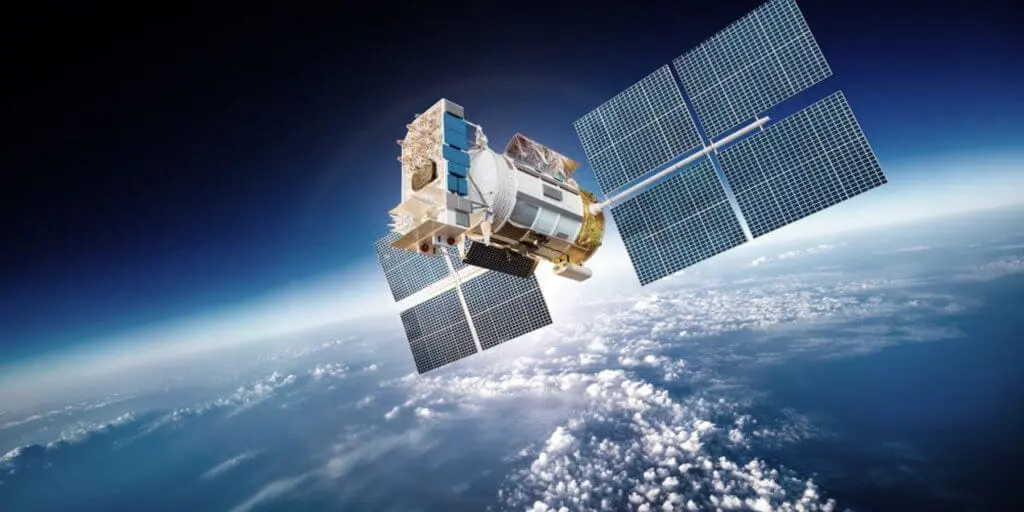One of billionaire entrepreneur Elon Musk’s ambitions is to offer flights to most places on Earth via rocket in under 30 minutes, at no greater cost than the ticket for a commercial flight.1https://www.spacex.com/human-spaceflight/earth/index.html And, in June, Sir Richard Branson’s Virgin Galactic got the green light to fly customers into space, paving the way for a new era of space tourism. Some 600 deposits have reportedly been paid already and the vehicle successfully reached the edge of space on 11 July.2https://www.cityam.com/virgin-galactic-granted-license-to-take-customers-to-space/ Closely following was Amazon founder Jeff Bezos, making his first short journey to space on the New Shepard.3https://www.bbc.co.uk/news/science-environment-57849364 It’s easy to appreciate Wall Street’s consensus that space will become a multi trillion-dollar economy in the next 10 to 20 years.4https://www.cnbc.com/2019/11/09/how-to-invest-in-space-companies-complete-guide-to-rockets-satellites-and-more.html
Interviews by Third Bridge Forum have explored several related themes and trends, including the burgeoning small satellite launch vehicle (SSLV) market and the need for space infrastructure. As we heard from a former director at SpaceX, the space ecosystem is “exploding for the first-ish time, and SpaceX is the tide rising all the ships right now”.
One of the areas where advancements in space are expected to come to fruition in the near term is broadband. According to Morgan Stanley, revenue generated by the global space industry could exceed USD 1trn by 2040, up from USD 350bn today and fuelled largely by satellite broadband.5https://www.morganstanley.com/ideas/investing-in-space Indeed, an executive at the Satellite Industry Association (SIA) told us this sector is growing rapidly. “With the addition of companies like SpaceX, OneWeb, Telesat’s expansion into non-geo stationary systems, we’re seeing a lot more capacity being added.” SpaceX is expected to launch its highly anticipated commercial Starlink service within the next year and its success will have a “big impact on the plans of other companies”, including existing satellite players. The next two years are going to be “pretty defining” in this regard, the SIA executive added.
The SSLV industry — a small but crucial fraction of the space market that enables satellites to reach space — is growing “tremendously”. A former director at Relativity Space said they’ve seen industry TAM projections of “about USD 7bn, I think USD 6.9bn annual revenues by 2028 and about USD 28bn or so total for launch”. With dollars per kilogram to orbit continuing to fall, satellites are being made for less and in turn lowering the barriers to entry. Entrants such as Astra, Rocket Lab, Relativity Space and Firefly are upping the competition and encouraging bigger providers, such as SpaceX, to make ride-share missions part of their sales strategy.
However, the former SpaceX director emphasised that while the dollar-to-kilogram ratio is coming down, at present the second stage of each rocket has to be rebuilt each time a rocket is launched. Therefore, “until the entire rocket becomes reusable, the ratio won’t reduce any further”. This is what SpaceX is pursuing with Starship. The specialist commented that “once rockets can be fully reusable, there’s nothing stopping the cost from plummeting down into the sub-USD 1,000-per-kilogram range.” Starship’s overarching goal is to be fully reusable, but more work is needed. As we heard, rockets are extremely expensive to design, build and test — and success is not guaranteed. The expert anticipates it will be at least a year or two before Starship is fully reusable. “And then any competitor is probably at least five years out from doing the same thing.”

Commenting on the market at large, there’s “a lot of money on the table” and the specialist said they “fully expect the landscape to become more competitive”. Indeed, the Relativity Space executive also noted that “about eight rockets are projected to launch this year, seven of which are in the small satellite or constellation resupply market, so it’s going to be a very, very active year”.
While players including Relativity Space and Rocket Lab are nipping at the heels of SpaceX by working on larger rockets, Forum Interviews suggest the latter may respond by lowering its prices or even taking a “significant loss” on ride-share services. To compete, smaller players will have to leverage their strengths of being more nimble and responsive, and offering dedicated orbits, we were told. “I do think that the competitive landscape is going to explode and then get winnowed quite quickly by those factors,” the former SpaceX director said. As the former SIA executive noted: “At one point I heard that there were over 100 companies that had announced some type of plan to be able to provide launch services. I don’t expect anywhere close to that number to actually end up deploying or becoming operational.”
As the space market grows, so too will the need for infrastructure and related support. This is an area that one of the specialists we spoke to anticipates will grow “dramatically in the future” as rockets scale and become more efficient. Satellites will have the choice of launching on a cheaper but larger rocket with a “connecting flight” to their destination versus a small vehicle of their size that takes them directly. The opportunity for a company like Momentus is to transport satellites from the launch vehicle to their eventual orbit, we heard. “The quicker one gets their satellites into orbit so that they can begin service, the quicker they can start generating revenue. Therein, I think, lies the opportunity,” the SIA executive said. We were told that traffic management will require the most infrastructure investment going forward, however. “Just given the… greatly increased number of satellites that are in space now and [are] expected to be launched in the future, that is an area of great concern to the industry,” they continued. Indeed, the number of satellites has doubled since the end of 2019.
Space is piquing the interest of more and more investors as our ambitions for low Earth orbit (LEO) and beyond intensify. Space as an investment theme is on course to spill into, or have a stronger association with, many sectors such as broadband, defence and even tourism. Competition in the SSLV industry and indeed across the board is heating up and only a fraction of companies are expected to be successful.
There are several challenges, however, that must be taken into account as the market expands, including a more urgent need for international cooperation when it comes to surveillance, as well as all the necessary infrastructure. For example, over 27,000 pieces of orbital debris are tracked by the Department of Defense’s global Space Surveillance Network sensors, as these can pose a serious risk to space exploration and safety.6https://www.nasa.gov/mission_pages/station/news/orbital_debris.html There are also concerns regarding how environmentally friendly space-related activities are, with rocket emissions one example of this. Just as we are striving to enhance the sustainability of how we live on Earth, this is just as important — if not more so — as we continue to explore and use space.
The information used in compiling this document has been obtained by Third Bridge from experts participating in Forum Interviews. Third Bridge does not warrant the accuracy of the information and has not independently verified it. It should not be regarded as a trade recommendation or form the basis of any investment decision.
For any enquiries, please contact sales@thirdbridge.com





